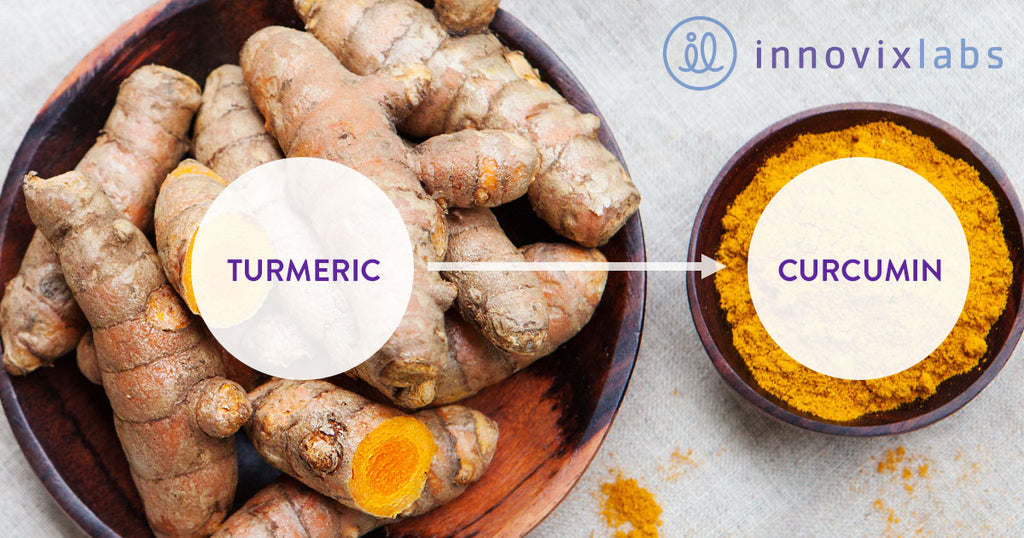
If you’ve been wondering what Curcumin is, other than a really hard-to-pronounce word, join the club.
Luckily we have some pretty first-rate fact-finders here that can do the R&D for you.
So let’s delve into this yellow-hued food.
To begin, Curcumin’s “parent,” if you will, is a food called turmeric.
Turmeric powder comes from the underground stems of Curcuma longa, a plant belonging to the ginger family. Uses of Turmeric was first recorded in China way back in 700 AD, and has been used in India for centuries since. According to folklore, because of its spirited color, turmeric was originally cultivated as a fabric dye. How did a dye turn into a food? Impossible to know, but perhaps someone got a little in their mouth at some point, and poof, a tasty spice was born.
One of the main chemical compounds in turmeric is called Curcumin.
Today, scientists are studying Curcumin for its many healing properties. While we’re far from the end of learning all the miracles this modern-day food can perform, two big (and we do mean big) benefits stand out among the rest.
1. Curcumin is a powerful antioxidant
What’s an antioxidant and why is it important? We’re glad you asked. To back up a bit…when the body uses oxygen, byproducts, or secondary stuff (free radicals), are formed.
You know how, say, when you cut wood and sawdust gets all over the room? You don’t mean to create the sawdust — you just wanted some cut wood — but you’ve got the sawdust anyway. In the case of our bodies, when the cells use oxygen —which is necessary for all sorts of bodily functions — free radicals, a type of molecule, are produced as a byproduct. Unintended, but there nevertheless.
Free radicals can also form from exposure to environmental toxins. Pollution in the air, cigarette smoke, too much time in the sun, that sort of unhealthy stuff.
Because free radicals have an uneven number of electrons, they’re considered “unstable,” and they’re always on the hunt for another electron to even things up. This damages other molecules in their pursuit along the way, and can set off a chain reaction so that more and more unstable molecules begin an onslaught of attack.
Antioxidants, on the other hand, are molecules that can step in and donate an electron. This not only neutralizes the free radical, but stops it from doing damage to other cells. Curcumin acts as an antioxidant, as well as boosts the activity of the body’s own antioxidant enzymes.
2. Curcumin is a potent anti-inflammatory
Biology lesson #2 today. You probably think of inflammation as something that happens to your skin when you, say, cut or scrape yourself.
Inflammation is actually good in this case, because the cut sets off a cascade of events. Eventually, hormones send signals to the cells to bring over more blood and oxygen to the area to help it heal. Because of this, the tissue becomes red, warm, and swollen.
But there’s another type of low-level inflammation that happens inside the body where you can’t see. Communication between cells breaks down and misfires. and Pro-inflammatory hormones are then continuously generated at a low level. Inflammation begins to attack the body itself, including the joints, blood vessels, and the tissues.
This chronic inflammation can lead to all sorts of problems, including aches, pains, fatigue, and more.
This one-two punch that Curcumin has as both an antioxidant and an anti-inflammatory can deliver knockout benefits.
Curcumin can help promote joint comfort and flexibility, support heart health and boost brainpower. Sounds pretty good to us!

